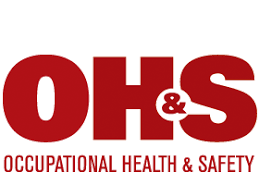The Safety Helmet Balancing Act: Considering Style and Comfort, Not Just Protection
As Type II safety helmets become the standard on job sites, factoring in comfort and style can help increase adoption rates.
BY RYAN BARNES, MAR 01, 2024 OHS
When asked to picture a construction or industrial site, a few things come to mind: cranes, scaffolding, hi-vis clothing, work boots and, of course, hard hats. Hard hats are worn principally for safety, but across its 100-plus-year history, the hard hat has come to mean so much more. It often serves as a symbol and identity piece for workers who put their bodies on the line every day on the job, for themselves, their employers and their families. Workers will often customize their hard hats with stickers to demonstrate their values, their interests and their place on the job site. But when it comes to protection, what does a hard hat actually symbolize?
The truth is the traditional hard hat is no longer the safest way to protect the brain and head on the job. Hard hat technology has remained practically unchanged for more than 100 years, with little innovation beyond the material of the shell. Principally, traditional hard hats can only protect individuals from falling objects, which now constitutes a significantly smaller percentage of actual workplace incidents compared to trips, slips and falls. According to the U.S. Bureau of Labor Statistics, falls, slips and trips were the leading cause of fatalities in the construction industry, accounting for 37.9 percent of all fatalities from 2015-2019. In comparison, deaths from falling objects represented just 16.7 percent of cases.
As a result, the industry is looking at new technologies and designs that can provide full, 360-degree head protection to account for falls, trips and slips along with falling objects.
The Helmet Overhaul: Introducing Type II Safety Helmets
During the past few years, industry leaders have begun taking a hard look at the industrial hard hat market. In response to the 1,008 fatal falls in the United States construction industry in 2020 alone, documented by BLS, construction safety officers, plant operators and more have started to transition to the newest approach to head protection: Type II safety helmets.
Known as the American National Standard for Industrial Head Protection ANSI Z89.1 Type II safety helmet, this new Type ensures comprehensive impact protection for the entire head, including front, back, sides and top. Often, Type II helmets include additional features not found on traditional Type I hard hats, such as chin straps, new Types of impact protection technologies and enhanced incident protection in the form of near-field communication (NFC) chips that digitally transfer vital user medical data to medical personnel in the event of an accident.
Click here to read this article as published in OH&S Magazine.



